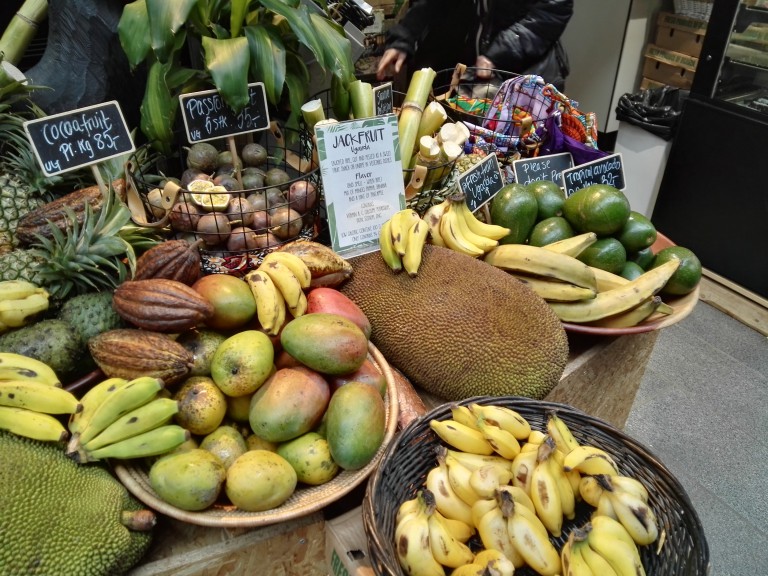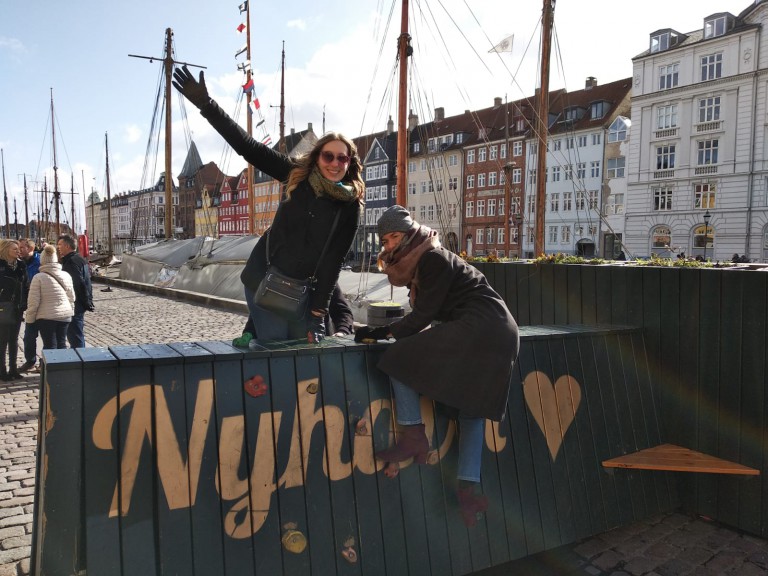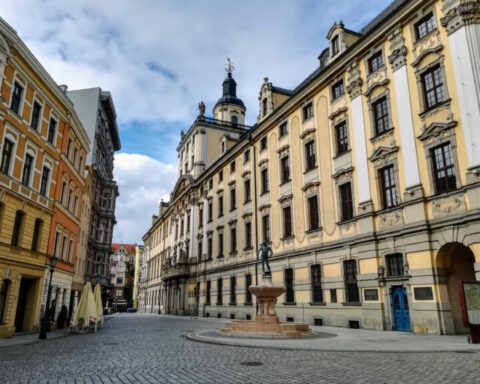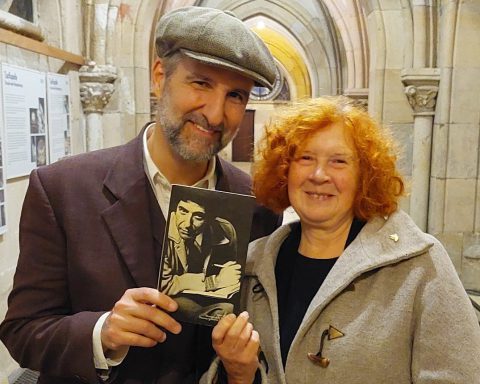At about 616,000, the municipal population of Copenhagen is just slightly above Leipzig’s. The capital city of Denmark, it is located on the northeastern coast of an island connecting the Baltic and North seas.
Arriving at Copenhagen Airport (CPH), I noticed that the signs are in Danish and English. Certain words looked like English anyway, and the Danish words were similar to German. The terminal was under construction; wires were hanging from the ceiling, rafters were open.
The action movie-lover in me imagined John McClane fighting bad guys in an empty airport terminal.

I had visited Copenhagen once before, but it was just for one night while I going to see a friend from Aarhus. My experiences with transit during that first trip to this lovely city were not that memorable. What I do remember, however, is the wind and the Little Mermaid.
As with any airport, there were many little shops and restaurants attempting to distract you as you walk by. Why no, I don’t want to sit and read a book with an overpriced bevvy when I could be out wandering a new city. My eyes focused in on hardcover copies of Hans Christian Andersen’s stories. I also noticed The Little Book of Lykke and The Little Book of Hygge. A colleague gave me the book on Lykke, a great coffee table book written by Meik Wiking, the CEO of the Happiness Research Institute.
Lykke in Danish means happiness. Really, who doesn’t want to feel happy all the time? Personally, I know I’m a much more awesome person to be around when I’m feeling happy. Life goal: always be smiling and happy!
Denmark is indexed as one of the top three places in the world for quality of life.
That’s a pretty strong statement to live up to. What in Denmark, and Copenhagen, makes people live so comfortably (or with hygge) and happily (lykkeligt)? It’s one of those glorious mysteries. Maybe it has something to do with the crazy weather changes that could happen within one day. Perhaps it’s because folks really take advantage of the small joys in life because, for a solid part of the year, they’re living in the dark.

It’s beautiful, clean, windy, and fun.
Coming from Eastern Germany, it’s also a helluva expensive city to visit. I believe their minimum wage is quite high in Danish krone. I’m not so great with numbers, so converting the costs of items in krone to euros wasn’t easy.
While visiting Copenhagen, I knew that I wanted to see one of the open-air markets. I love exploring and eating or drinking at markets. And I thoroughly enjoy drinking craft beer. Definitely have something to eat and drink at Torvehallerne, at any time of the year!
What else is Copenhagen known for? Cafes! Left, right, behind you, in front of you: They are everywhere.

As I mentioned, as Copenhagen is located on the coast between the North and Baltic seas, it’s brisk. I think even in the summer it doesn’t get too hot up there. No matter, you’ll always see Danes out and about!
As the ground became consistently more thawed here in Leipzig, I was continually amazed at the throngs of humans out. Where the hell do they all hibernate in the winter? I mean, Leipzig feels so much busier with foot and bicycle traffic as soon as it gets over 10 degrees Celsius outside.
What do they do all winter long? Where do they go? Why aren’t they still out wandering through the city?
I began this article wanting to talk about human interactions.
Living in Germany for the last year, I’ve come to expect that folks won’t return my smile as I walk through the park. Or look offended if I cross the street before the Ampelmann says I can. This is so normal now that I forgot what it’s like to strike up a conversation with a stranger!
I was spoken to more during my first moments in Copenhagen than in my first week in Leipzig. Be helpful to a stranger, period. Be kind to the person sitting across from you in public transit, period. It’s not a difficult behavior to participate in, I promise.

I think it’s interesting, fun, and respectful to learn at least a few words or key phrases when visiting a different culture. Hello in Danish is simple: hej (pronounced “hey”), thanks: tak, and cheers: Skål. I attempted a few other words, but they didn’t go over so well with the sounds my mouth is comfortable making.
On the metro from the CPH airport to the city center, I was studying Google Maps for transfer info. I still tried to make some of the Danish sounds as I heard the speaker announce our next stop. Three lovely older Swedish men sat with us as we were speeding into the city. Their English was impeccable.
We had a lovely chat about why we were visiting Copenhagen and what living in Leipzig is like for two Canadians. I learned that prior to WWI, school children all learned German as a second / third language. I also learned that these men grew up when steam trains were the main method of transportation – um, wow!
Coming from the same language family, Danish and Swedish indeed aren’t so dissimilar from written German. The way the Danes speak is quite different from Germans, though. The Swedish men were making fun of it.
I think languages are more beautiful the stranger they sound.
Danish and other Scandinavian languages are on my list, as are German and Russian.

Still on the metro, a middle-aged woman was now sitting beside us. She overheard us discussing at which stop to disembark and needing to catch a bus from there. She gently advised us on where to go once we left the train to find the bus up at street level. How nice! With my sound sense of direction, we went up a different stairwell, and her directions were no longer correct.
I saw a woman across from us, and I went over to her, and said, “Oh excuse me, could you please tell me where to find this bus?” She was very descriptive with telling us where to catch the bus. From this, she engaged in a short conversation and we ended our chat with her telling me that I had the most beautiful hair!
I’ve been in Copenhagen for maybe an hour and I’ve already spoken with 5 strangers.
All of them were exceptionally polite (perhaps they’re just being normal and these interactions were just surprising to me), and I even got complimented.
The rest of the weekend had all sorts of stranger encounters like what I shared above. Perhaps the most memorable of them happened in Freetown Christiania. Within 5 minutes of walking inside the walls of this alternative, graffiti-filled, hippie hub, I accidentally bumped into a woman – similar in age to me.
Immediately, the Canadian in me popped out and I said, “oh, I’m sorry” to her. It was then that she picked me up and spun me round and round, while making kind of yodeling sounds, for a solid moment. I wasn’t quite sure what to make of the situation; it being in Christiania and all, I chalked it up to her having a most excellent day thus far and wanting to share that joy with a total random stranger.
Thinking back on it, my memories aren’t really about the places I went or what I saw in Copenhagen. My memories are about the encounters I had with people I’ve never met before and will probably never meet again.

It was really hyggeligt to spend some time in Copenhagen. Can the German culture participate in Glücksgefühle or Gemütlichkeit towards others? Or will these types of interactions remain a cultural experience I have while traveling?






![Wine & Paint event on 9 Nov. 2024 at Felix Restaurant, Leipzig. Photo: Florian Reime (@reime.visuals] / Wine & Paint Leipzig](https://leipglo.com/wp-content/uploads/2024/12/pixelcut-export-e1733056018933-480x384.jpeg)

